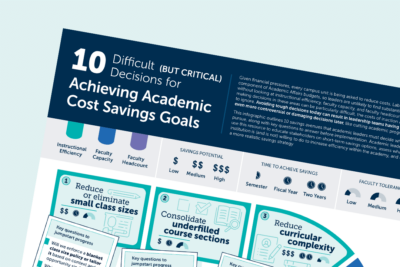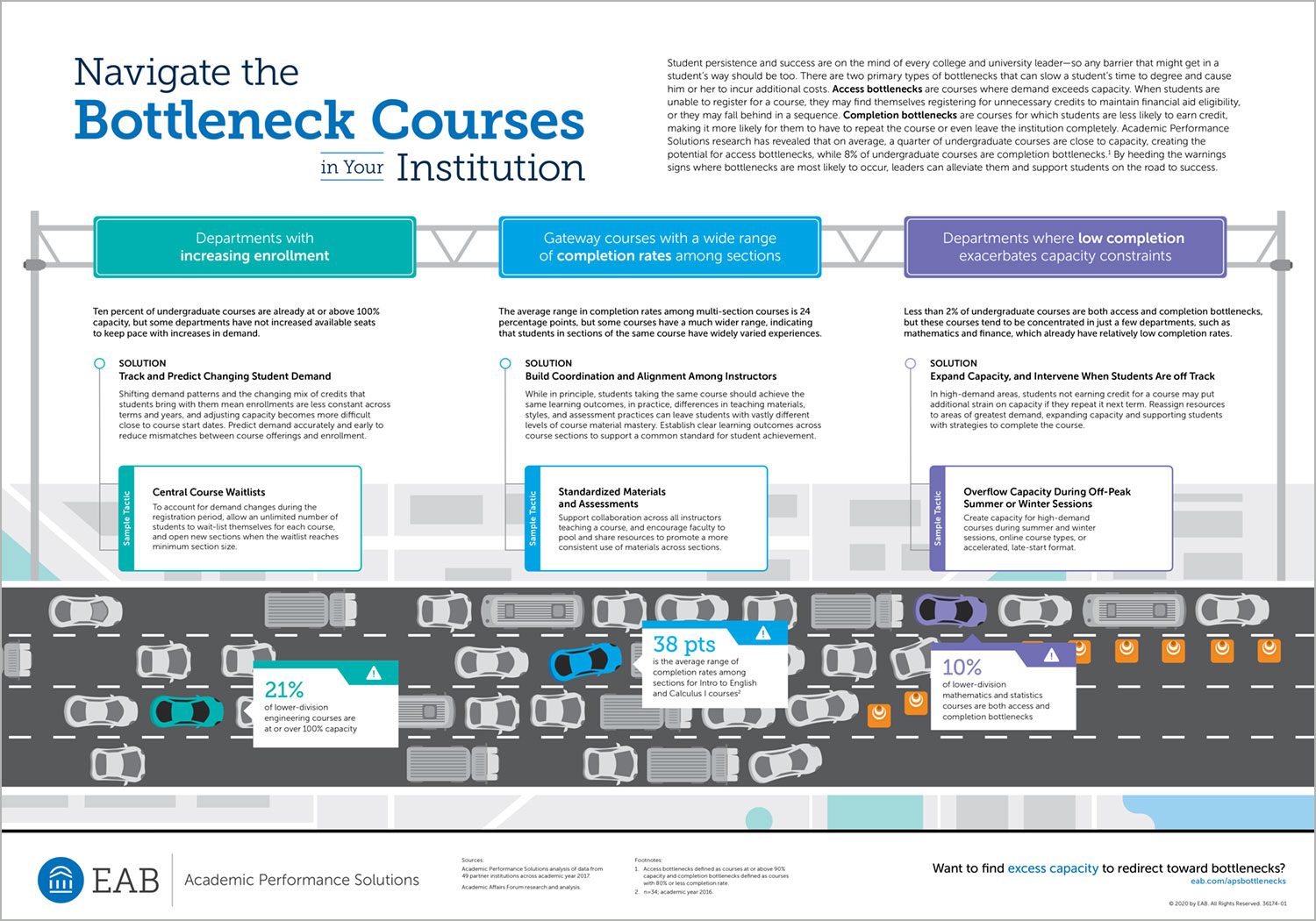Navigate the bottleneck courses in your institution
Student persistence and success are on the mind of every college and university leader—so any barrier that might get in a student’s way should be too. There are two primary types of bottlenecks that can slow a student’s time to degree and cause him or her to incur additional costs.
Access bottlenecks are courses where demand exceeds capacity. When students are unable to register for a course, they may find themselves registering for unnecessary credits to maintain financial aid eligibility, or they may fall behind in a sequence. Completion bottlenecks are courses for which students are less likely to earn credit, making it more likely for them to have to repeat the course or even leave the institution completely.
More Resources

10 difficult (but critical) decisions for achieving academic cost
savings goals

Academic Innovation Resource Center

